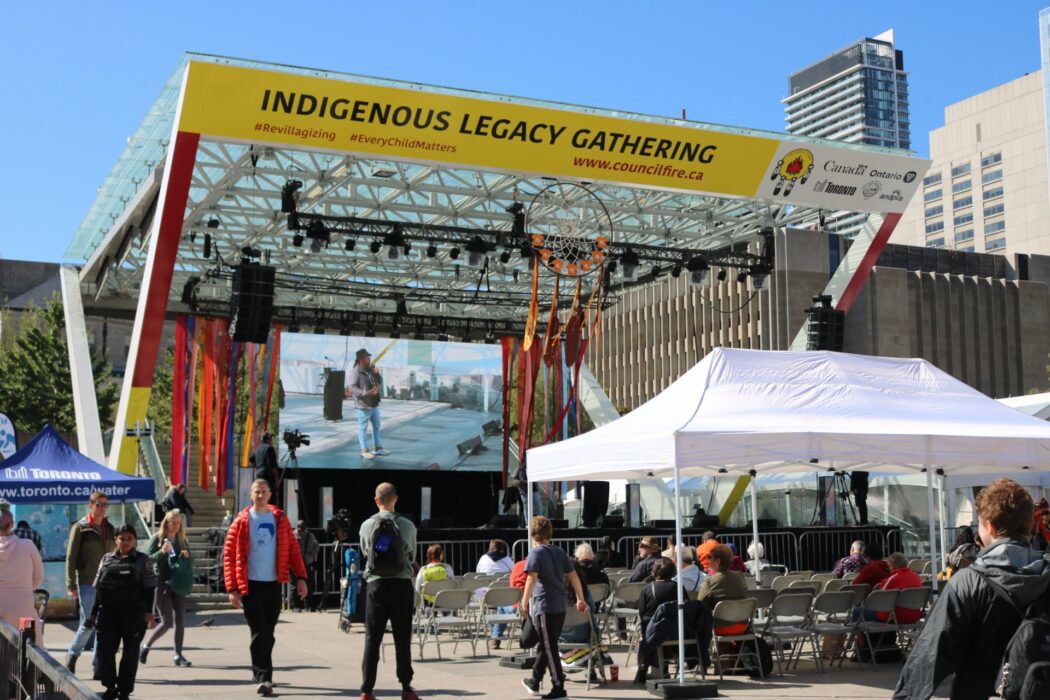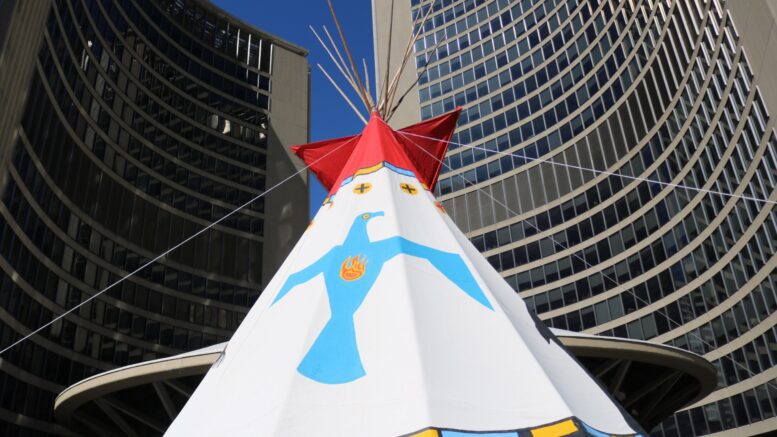National Day for Truth and Reconciliation events were held Sept. 30 all over Toronto, including the Indigenous Legacy Gathering at Nathan Phillips Square.
The day honours all of the Indigenous children who attended and died at residential schools. It also helps to help provide support and a voice for survivors and families who are still affected by residential schools.
The Indigenous Legacy Gathering was an event that took place Sept. 29 and 30 at Nathan Phillips Square. It consisted of a sunrise ceremony each day, presentations, educational booths, a marketplace and local Indigenous performers and artisans.
Emerelle Julian, an Indigenous woman who was in charge of the Toronto District School Board’s Indigenous Educational Booth, shared what the day means to her.
“It means being present, connecting with my ancestors, recognizing that we are still here, we are still resilient, strong and beautiful people,” Julian said.
“Talk about these topics any chance you can, bring it up on the subway, bring it up at your workplace. Help educate others, talk about it and make [them] aware.”
Parliament approved the National Day for Truth and Reconciliation only days after the Tk’emlúps te Secwépemc First Nation confirmed that at least 215 burial sites had been found on the site of a former residential school in Kamloops, B.C.
Julian said she’d like to see learning and awareness about truth and reconciliation develop further.
“I would like to see a lot more schools recognize that the Canadian anthem needs to be looked at differently and changed. I would also like to see more people have awareness about what’s going on. A lot of people just don’t know,” Julian said.
Kaeli Goldman is a non-Indigenous woman who was in charge of the Missing and Murdered Indigenous Women and Girls booth at the gathering. She also knows how much this day means to her and wants to see more change.
“Truth and Reconciliation means that for newcomers and southerners to dig deep and explore how to reconcile their privilege and their place on this land and in these territories,” Goldman said.

“If people would like to know more, I would say understand Indigenous women, two-spirited, boys, girls are victimized by violence that is targeted against Indigenous persons.
“Understand the policing complexes are complicit, and remember that behind every victim, there is a whole family,” she said.
The gathering gave Torontonians a taste of Indigenous cultures and why this day is so important and how to support them in the future.
“I was just taking my lunch break, and I saw this festival going on. I didn’t even know today was Truth and Reconciliation day. It was a huge shock to me,” Daron Evans, a local of the area, said.
“I took some time to talk to a few [people at] booths, and I didn’t realize how much trauma these folk went through and are still dealing with. I hope this day becomes bigger and bigger with each year and more people start to wake up.”
To learn more about Indigenous peoples and culture, visit the National Centre for Truth and Reconciliation‘s website.

